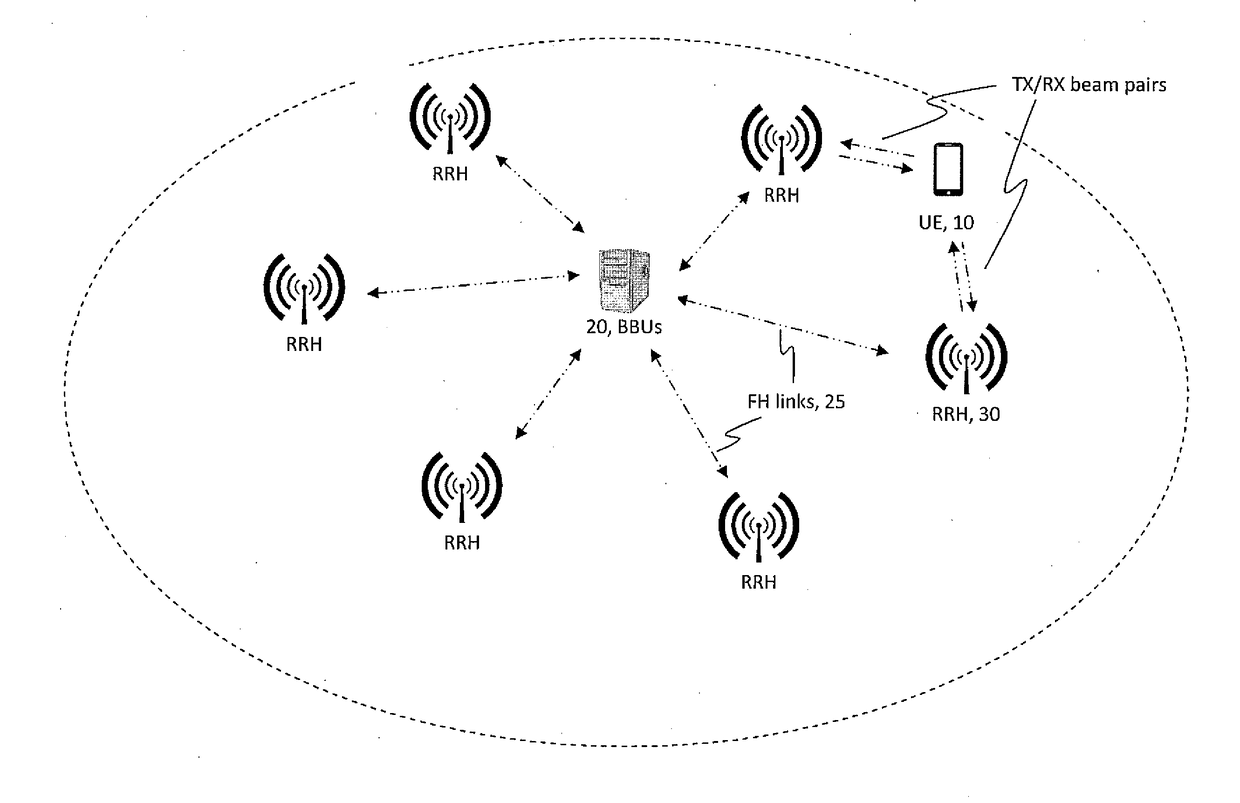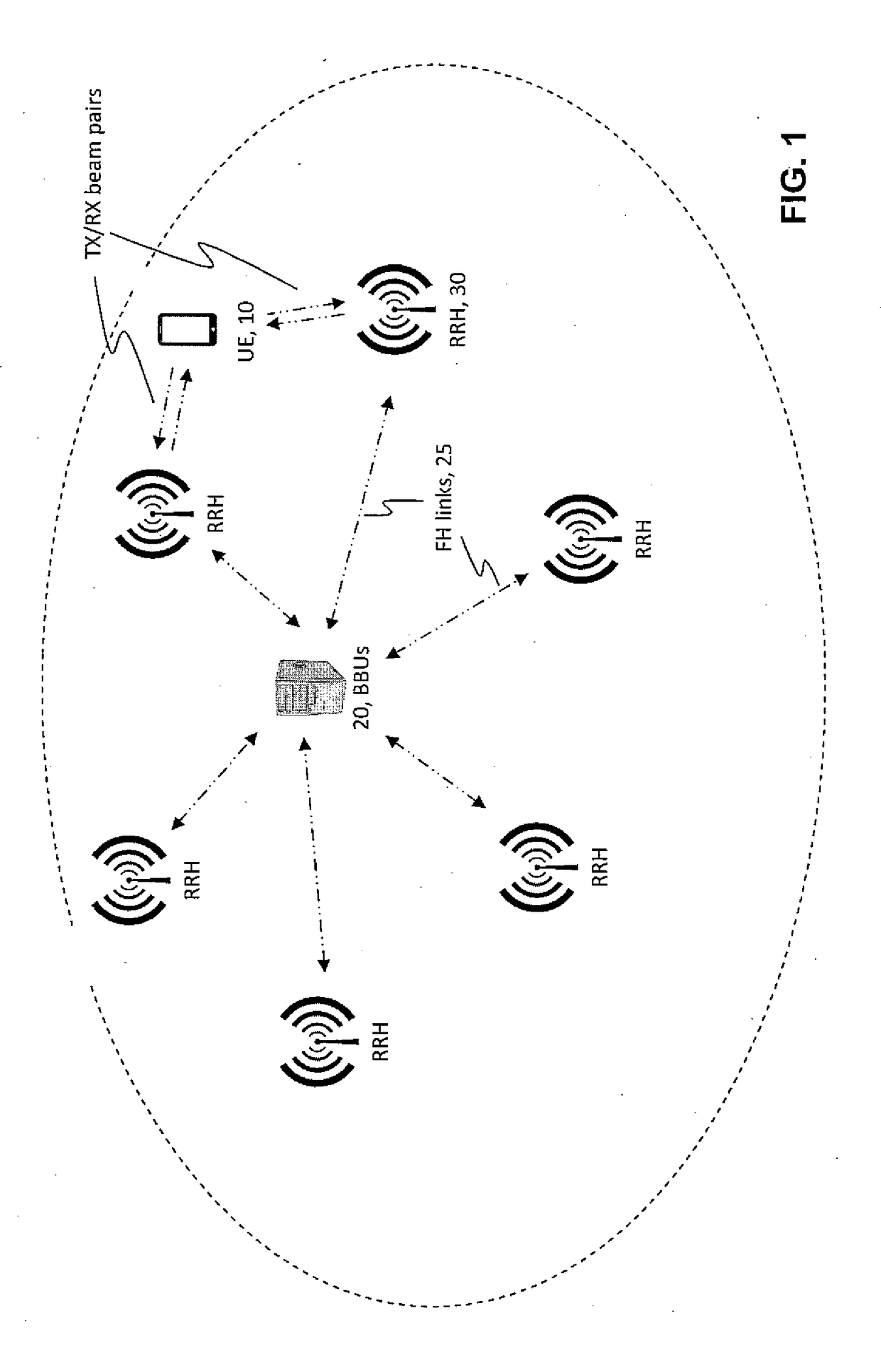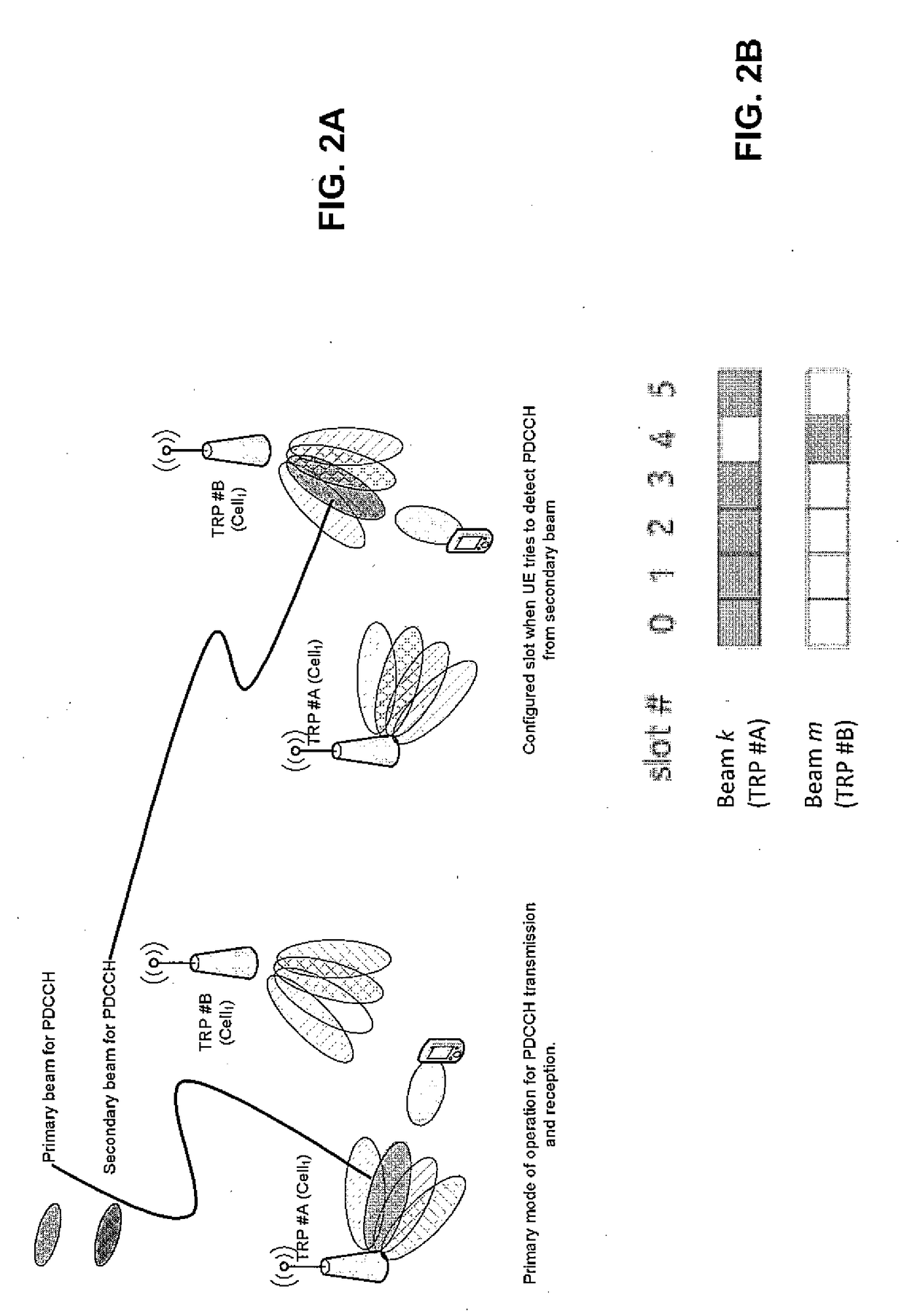Robust Control Channel Transmission Scheme
a transmission scheme and control channel technology, applied in the field of wireless communication, can solve problems such as too long delay
- Summary
- Abstract
- Description
- Claims
- Application Information
AI Technical Summary
Benefits of technology
Problems solved by technology
Method used
Image
Examples
Embodiment Construction
[0029]The embodiments below are in the context of a NR / 5G radio system but this is only an example radio environment and not a limit to the broader teachings herein. Since these teachings are directed primarily to the exchange between the radio network and the UE, the network side of this exchange will be described with reference to a TRP, which per FIG. 1 may be RRHs but not all TRPs are RRHs.
[0030]Given the sensitivity to beam blockage at mmWave frequencies in general, in the 3GPP group's development of NR / 5G it is already being considered to make the NR-PDCCH more robust by enabling it to be transmitted to the UE from multiple TRPs, meaning multiple beams. Further refining this in view of the fact that not all UEs may be capable of ‘listening’ simultaneously in multiple directions, a time domain pattern for the PDCCH beams is being considered so that the UE is able to know which beam would be the transmitting beam for PDCCH at a certain slot. On the other band, this beam blockage...
PUM
 Login to View More
Login to View More Abstract
Description
Claims
Application Information
 Login to View More
Login to View More - R&D
- Intellectual Property
- Life Sciences
- Materials
- Tech Scout
- Unparalleled Data Quality
- Higher Quality Content
- 60% Fewer Hallucinations
Browse by: Latest US Patents, China's latest patents, Technical Efficacy Thesaurus, Application Domain, Technology Topic, Popular Technical Reports.
© 2025 PatSnap. All rights reserved.Legal|Privacy policy|Modern Slavery Act Transparency Statement|Sitemap|About US| Contact US: help@patsnap.com



